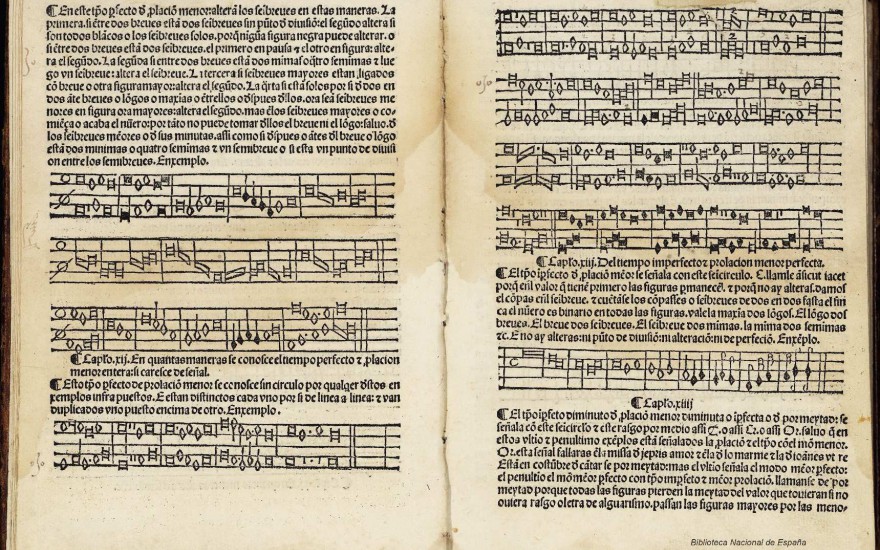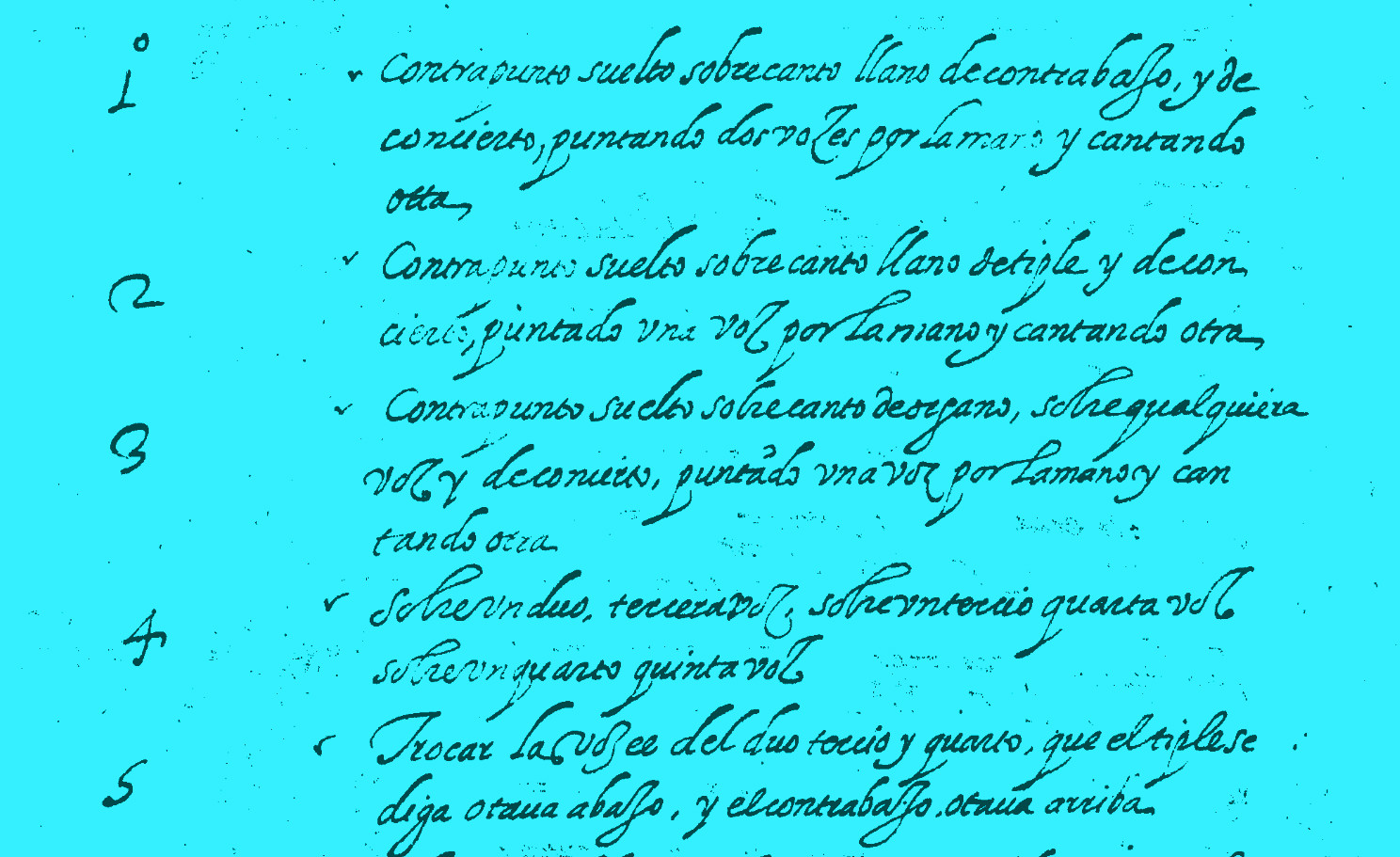Thanks to the care and attention to detail of the copyist who transcribed the chapter meeting’s decisions, we know even to this day the details of the tests undergone by these four candidates. This document not only serves as a fascinating witness to the concrete realities of musical life at the end of the Renaissance; it also informs us about the abilities that were expected of a musician at the height of his profession. [^2] It also remarkably contradicts our previous understanding of how such contests were organised.
From Philippe Canguilhem, “Singing upon the book according to Vicente Lusitano.” Early Music History 30 (2011): 55–103: 56. doi:10.1017/S0261127911000052.
Footnote 2 (p. 56) contains more details about the text and Canguilhem’s transcription:
[^2]: The document has previously been published by D. Preciado, Alonso de Tejeda (ca. 1556–1628), polifonista español, vol. 1 (Madrid, 1974), p. 78, and F. Reynaud, La polyphonie tolédane et son milieu: Des premiers témoignages aux environs de 1600 (Paris and Turnhout, 1996), pp. 135–6. My transcription in the appendix [pp. 102–103], which Michael Noone was able to check against the original document, differs slightly from the two cited above.
Find below his transcription of the source:
The Twenty Tests for Applicants for the Post of Choirmaster at Toledo Cathedral in 1604
Source: Toledo, Catedral, Archivo y Biblioteca Capitulares, Actas Capitulares 23, fol. 183r–v. (The corresponding examples of Paris, BnF Esp. 219 are indicated in square brackets.)
- Contrapunto suelto sobre canto llano de contrabajo [Lusitano, fols. 18–38], y de concierto, puntando dos vozes por la mano y cantando otra.
- Contrapunto suelto sobre canto llano de tiple [Lusitano, fol. 43], y de concierto, puntando una voz por la mano y cantando otra.
- Contrapunto suelto sobre canto de organo sobre qualquiera voz [Lusitano, fols. 49v –54], y de concierto, puntando una voz por la mano y cantando otra [Lusitano, fols. 54v –55].
- Sobre un duo, tercera voz; sobre un tercio, quarta voz; sobre un quarto, quinta voz [Lusitano, fols. 56–57v].
- Trocar las vozes del duo tercio y quarto, que el tiple se diga otava al bajo, y el contrabajo otava arriba.
- Sobre una voz de canto de organo, puntar dos vozes por la mano y cantar una [Lusitano, fol. 55v]. [upon a mensural music part, indicate two voices on the hand while singing another.]
- Sobre un tiple y contralto, puntar una voz por la mano y cantar otra.
- Sobre una voz de canto de organo, cantar un passo forçoso y puntar otra voz por la mano con el mismo passo [Lusitano, fol. 56: ‘these are things that should be shown in front of the book rather than in written form’].
- Sobre un tercio, dezir una quarta voz, todos semibreves [Lusitano, fol. 56: ‘these are things that should be shown in front of the book rather than in written form’].
- Sobre una voz de canto de organo, dezir breves todos, esperando dos pausas a lo mas largo [Lusitano, fols. 49v –50].
- Sobre lo mismo, dezir todos semibreves en sincopa en regla y en espacio, y otra vez minimas en sincopa [Lusitano, fols. 50–1].
- Contrapunto sobre una voz de proporcion [Lusitano, fols. 36–8].
- Sobre un tiple de canto de organo, cantar una voz y pronuncie por solfa otra que cante un cantor.
- Sobre una voz de canto de organo, fuga en 4a y 5a [Lusitano, fol. 54r–v] y lo mismo sobre canto llano de tiple [Lusitano, fol. 48v].
- Una fuga en segunda sobre un tiple [Lusitano, fol. 48v, ‘sobre contrabajo’].
- Composicion de todas maneras.
- Regir el fasistor subiendo y baxando las vozes todas.
- Canten los musicos sin pausas, aguardando al maestro los buelva.
- En el discurso de la musica, calle algun musico para ver si el maestro echa de ver que falta aquella voz.
- Examinese en la misa de Jusquin super voces musicales, y en los canones del Benedictus de la misma missa, o en otros del mismo autor.
For an English translation of the tests, see this post.

